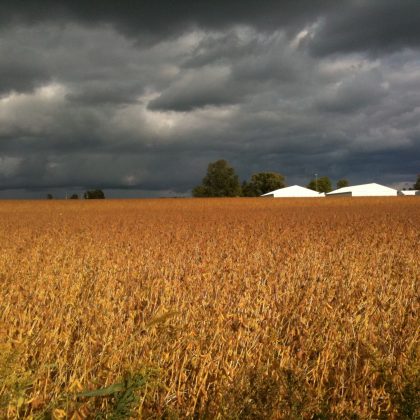Planning for Disasters in a Changing Environment
In October 2018 the Intergovernmental Panel on Climate Change released a special report (SR15) warning of the impacts of a global rise in temperature above 1.5 C average, explaining that only 12 years remained before irreversible changes and disasters were ‘baked’ into the global system.
Responses to the report varied from outright denial to ambitious legislative proposals such as the ‘Green New Deal’ in the US Congress. For most people however there was still uncertainty over exactly what such warnings meant, and how changes to global environmental systems would affect them, their businesses, or their communities. In their new book, Disaster Security: Using Intelligence and Military Planning for Energy and Environmental Risks, Chad Briggs and Miriam Matejova discuss new approaches to assessing environmental security risks, taking into account the inherent uncertainty of abrupt climatic changes, complex systems, and extreme environmental events.

Climate change is not a distinct hazard. Likewise, climate-related disasters are often complex and diffuse in their origin. While energy and environmental systems often lack intentionality, disasters are rarely purely ‘natural’.
The associated risks and impacts depend on a combination of complex hazards, critical vulnerabilities, and human behaviour. Like the end of the Cold War, climate change threatens to pull the rug out from our assumptions on how we plan and respond to security risks, by shifting the ‘environment’ within which we think and operate.
Our expectations about the occurrence, intensity and effects of future security risks should not be based on our past experiences. The approaches presented in this book are not meant to provide predictions or calculations of risk probabilities. Instead, they are meant to help us prepare for potential future events and emerging risks, and particularly those that run against our intuition.

The Pacific region is an example of where abrupt environmental changes can lead to new disaster conditions that were previously difficult to conceive. For example, increased intensity and shifting locations of tropical storms in the Pacific have forced governments and militaries to plan for the ‘unexpected’, whether from catastrophic typhoons in the Philippines (e.g. Haiyan in 2013) or risks to areas historically unaffected from such storms, such as the Hawaiian Islands. While some disasters, such as the 2011 Tohoku tsunami in Japan, are not climate-related, they can nonetheless illustrate how underlying vulnerabilities in complex systems can cascade into much larger disasters. The chain of events leading to the nuclear meltdown at the Fukushima Daichi plant exposed both the physical and political vulnerabilities of nuclear systems in Japan.
The book describes techniques used by the US Air Force and partners to help anticipate emerging disasters risks such as those in Hawaii and cascading impacts such as those in Japan. The authors also explain how these approaches can be used elsewhere, from national governments to local communities.

Read more in ‘Disaster Security: Using Intelligence and Military Planning for Energy and Environmental Risks’ by Chad Briggs and Miriam Matejova






